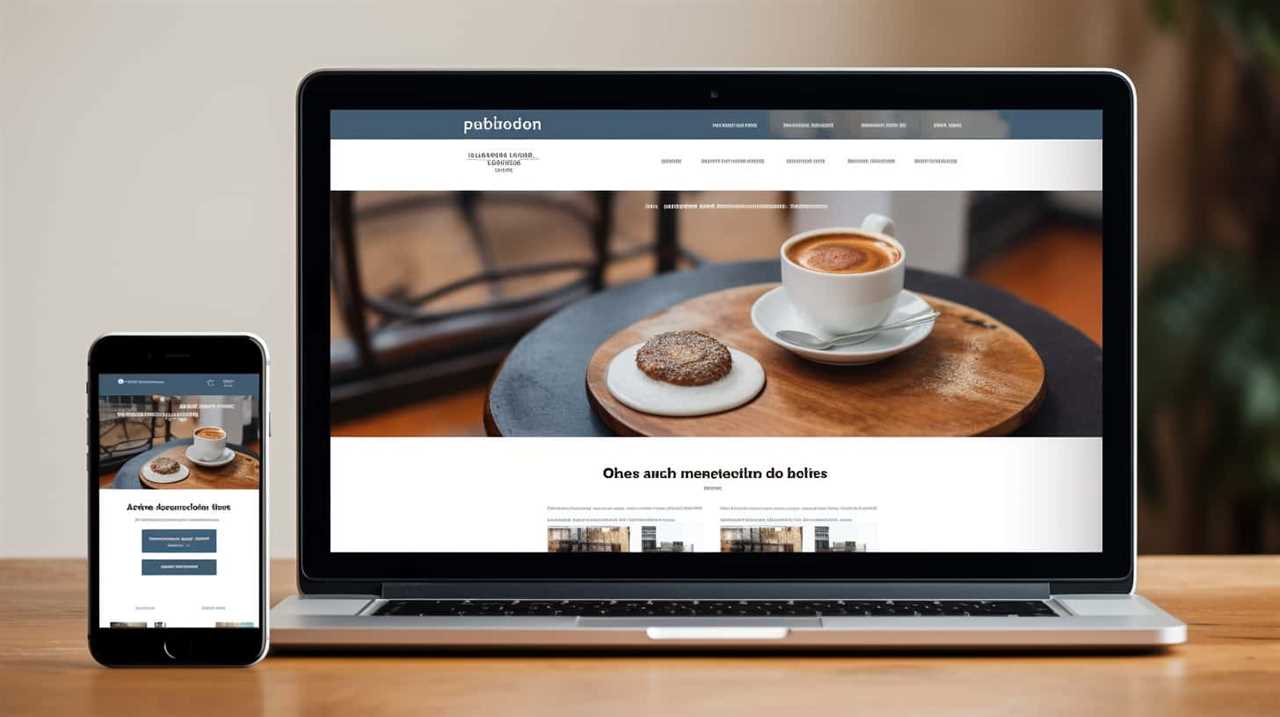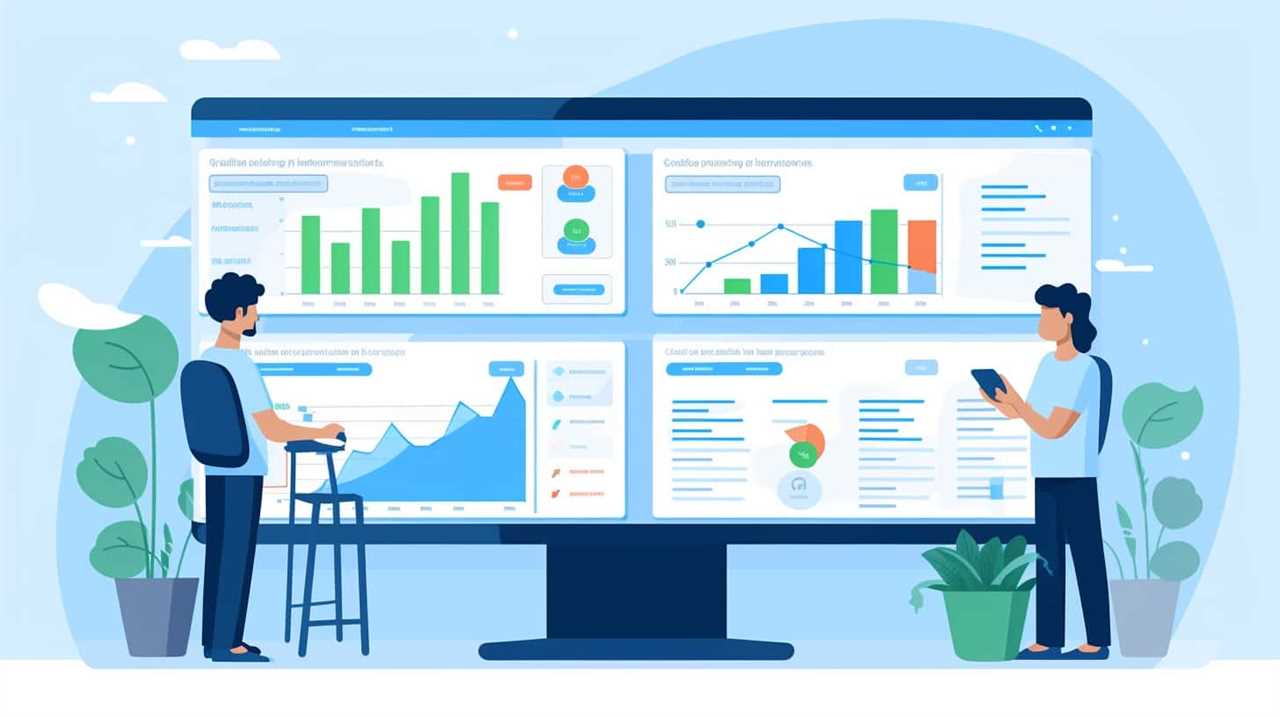Ladies and gentlemen, get ready to set off on a journey toward content liberation. Are you prepared to expand your online presence with 15 powerful SEO tactics?
We will guide you through the labyrinth of keyword research, on-page optimization, and captivating content creation. Together, we will optimize meta tags and descriptions, structure header tags flawlessly, and master the art of internal and external linking.
Get ready to enhance user experience and site speed, as we pave the way to content quality supremacy.
Key Takeaways
- Prioritize keyword research and optimization for effective content optimization.
- Incorporate long tail keywords to attract qualified and targeted traffic.
- Utilize visuals like images, videos, and infographics to enhance storytelling.
- Compelling meta descriptions entice users to click through.
Keyword Research and Optimization
To effectively optimize your content for search engines, it’s crucial that we prioritize keyword research and optimization.

Content relevance and the use of long tail keywords are key factors in achieving this optimization.
Content relevance refers to how closely your content aligns with the intent of the user’s search query. By understanding what your target audience is searching for and incorporating those relevant keywords into your content, you increase the chances of your content appearing in search results.
Long tail keywords, on the other hand, are specific keyword phrases that are more targeted and less competitive. By incorporating long tail keywords into your content, you can attract more qualified and targeted traffic, leading to higher conversion rates.
On-Page SEO Best Practices
In order to further optimize our content for search engines, let’s delve into the best practices of on-page SEO.

One crucial aspect of on-page SEO is website navigation. A well-structured and user-friendly navigation system enhances the user experience and helps search engines understand the content hierarchy of your website. It’s important to have clear and concise navigation menus, with descriptive labels and organized categories.
Additionally, mobile optimization is essential for on-page SEO. With the increasing use of mobile devices, it’s crucial to ensure that your website is mobile-friendly and responsive. This involves optimizing your website’s design, layout, and content to provide a seamless experience across different screen sizes.
Creating High-Quality, Engaging Content
When it comes to creating high-quality, engaging content, two key points to consider are the impact of visual storytelling and the benefits of user-generated content.
Visual storytelling can captivate your audience and make your content more memorable, while user-generated content can provide authentic and relatable experiences that resonate with your target audience.

Visual Storytelling Impact
Our team has found that incorporating visual storytelling into our content has had a significant impact on creating high-quality, engaging content. Here are some key points to consider when it comes to the visual storytelling impact:
- Visual storytelling techniques: Utilizing visuals such as images, videos, infographics, and animations can enhance the overall storytelling experience and make the content more visually appealing to the audience.
- Impact of visual content on SEO: Including visual elements in your content can improve its search engine optimization. Search engines prioritize visually appealing content, and incorporating relevant visuals can increase the time users spend on your page, reduce bounce rates, and improve overall user engagement.
- Storytelling through data visualization: Presenting complex information or data using visual elements can make it easier for users to understand and retain the information, leading to a more effective communication of your message.
User-Generated Content Benefits
By harnessing the power of user-generated content, we can create high-quality, engaging content that resonates with our audience. User-generated content refers to any form of content, such as reviews, testimonials, or social media posts, that’s created by users or customers. This type of content has become increasingly influential in the digital landscape, with social media platforms playing a significant role in its dissemination. Users are more likely to trust content generated by their peers rather than traditional advertising.
By incorporating user-generated content into our marketing strategy, we can tap into the social media influence and build trust with our audience. This not only enhances the quality of our content but also increases its engagement potential.
Now, let’s explore another important aspect of optimizing our content – optimizing meta tags and descriptions.

Optimizing Meta Tags and Descriptions
Improving the optimization of meta tags and descriptions enhances the overall quality of our content.
Writing compelling meta descriptions is crucial as it provides a concise summary of the webpage’s content, enticing users to click through to our website. By incorporating relevant keywords and a call-to-action, we can increase the click-through rate and attract more organic traffic.
Additionally, meta tags play a vital role in SEO by providing search engines with information about our webpage’s content. Including relevant keywords in meta tags helps search engines understand the context of our content and rank it accordingly.
Finally, well-optimized meta tags and descriptions improve the user experience by providing accurate and informative snippets in search engine results.

As we delve into implementing proper header tags structure, we’ll further enhance the overall optimization of our content.
Implementing Proper Header Tags Structure
To further enhance the overall optimization of our content, we can implement a proper header tags structure. Header tags, such as H1, H2, and H3, play a crucial role in organizing and structuring our content. They not only help search engines understand the hierarchy of our information but also make it easier for users to navigate through our content. By using header tags effectively, we can improve the user experience and boost our SEO efforts.
One of the benefits of implementing a proper header tags structure is the importance of anchor text optimization. Anchor text refers to the clickable text in a hyperlink. By using relevant keywords in our header tags, we can optimize the anchor text and provide additional context to both search engines and users.
Another advantage of using structured data markup is the ability to provide more detailed information about our content to search engines. Structured data markup uses a standardized format to add additional metadata to our website. This not only helps search engines understand our content better but also allows them to display rich snippets in search results, which can increase our visibility and click-through rates.

To summarize, implementing a proper header tags structure is essential for optimizing our content. It improves the organization and navigability of our content, optimizes anchor text, and enables the use of structured data markup for enhanced search engine visibility and user experience.
| Header Tag | Function |
|---|---|
| H1 | Main heading of the page, should only be used once |
| H2 | Subheading that breaks down the main sections of the page |
| H3 | Subheading that further breaks down the sections under H2 |
Utilizing Internal and External Linking Strategies
After implementing a proper header tags structure to optimize our content organization and navigability, we can now explore the benefits of utilizing internal and external linking strategies. These techniques are crucial for improving our website’s SEO and enhancing the user experience.
Here are three key reasons why we should incorporate internal and external linking into our content:
- Internal Linking Strategies:
- Helps search engines understand the structure and hierarchy of our website.
- Allows users to easily navigate between related pages, increasing engagement.
- Distributes link authority throughout our site, boosting the visibility of important pages.
- External Linking Techniques:
- Provides additional value to our readers by linking to reputable sources.
- Increases our website’s credibility and authority in the eyes of search engines.
- Encourages other websites to link to our content, improving our backlink profile.
By implementing these linking strategies, we can enhance our website’s SEO and provide a better user experience.

Next, we’ll explore how optimizing user experience and site speed can further elevate our content quality.
Enhancing User Experience and Site Speed
Now let’s delve into optimizing user experience and site speed to further enhance the quality of our content. One of the key aspects of improving user experience is ensuring mobile responsiveness. With the increasing use of mobile devices, it is crucial that our website is accessible and easy to navigate on different screen sizes. This can be achieved by using responsive design techniques and optimizing images and media files for mobile devices. Additionally, reducing page load time is essential for a smooth user experience. Slow-loading pages can negatively impact user satisfaction and lead to higher bounce rates. To achieve faster page load times, we can optimize our code, leverage browser caching, and utilize content delivery networks (CDNs). By prioritizing these strategies, we can create a seamless user experience and keep our audience engaged.
| Key Aspect | Techniques | Benefits |
|---|---|---|
| Improving mobile responsiveness | Responsive design techniques, optimizing images and media files | Enhanced user experience, increased mobile traffic |
| Reducing page load time | Optimize code, leverage browser caching, use CDNs | Faster page load times, improved user satisfaction, lower bounce rates |
Frequently Asked Questions
How Can I Determine the Right Keywords to Target for My Content?
Determining the right keywords for our content involves conducting thorough keyword research and analyzing our target audience. By understanding what our audience is searching for, we can optimize our content to attract the right traffic and improve our SEO.
What Are Some Best Practices for Optimizing Meta Tags and Descriptions?
Optimizing meta tags and descriptions is crucial for SEO success. Here are some best practices to follow: use relevant keywords, keep them concise, and write compelling descriptions that accurately represent your content.

How Can I Improve the User Experience of My Website to Enhance Seo?
To improve user experience and enhance SEO, we focus on improving website navigation and enhancing mobile responsiveness. By creating a seamless journey for users, we increase engagement and make our content more accessible and enjoyable.
What Are Some Effective Strategies for Internal and External Linking?
Effective strategies for internal and external linking include guest blogging and link building. These techniques help to enhance the visibility and authority of our website, ultimately improving our SEO and user experience.
What Role Does Site Speed Play in SEO and How Can I Improve It?
Improving website performance is crucial for SEO. Site speed plays a pivotal role, especially with mobile optimization becoming increasingly important. We can enhance it by optimizing images, minifying code, and using caching techniques.
Conclusion
In conclusion, implementing these 15 SEO techniques can greatly elevate the quality of your content. By conducting thorough keyword research, optimizing on-page elements, and creating engaging content, you can improve your website’s visibility and attract more organic traffic.

Additionally, optimizing meta tags and descriptions, using proper header tags, and implementing internal and external linking strategies will further contribute to your website’s success.
Furthermore, focusing on enhancing user experience and site speed is crucial in improving your website’s overall performance.
It’s important to remember that Rome wasn’t built in a day, so be patient and consistent in your SEO efforts.










